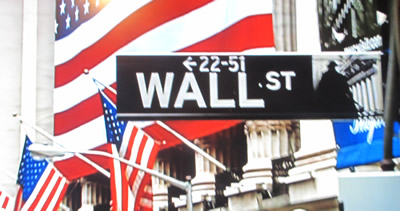Hard Cold Numbers on the Credit Crunch
Stock-Markets / Credit Crunch Aug 15, 2008 - 09:10 AM GMT Mike Larson writes: Last week, I gave you several real-world examples of lenders who were refusing to take the Federal Reserve's "bait."
Mike Larson writes: Last week, I gave you several real-world examples of lenders who were refusing to take the Federal Reserve's "bait."
A quick recap: The Fed has been driving the cost of money down in an effort to spur more lending. But many banks have instead reduced their exposure to various business lines — and eliminated some loan products altogether.
Now, I have some fresh, just-released numbers to share with you. They come straight from the Fed itself — and they tell a stunning tale about just how severe this credit crunch is.
Fed Loan Officer Survey Shows Widespread Tightening!
Every quarter, the Fed releases a report called the "Senior Loan Officer Opinion Survey on Bank Lending Practices." It quantifies how many banks are tightening standards, and on which types of loans. The third-quarter survey was conducted in July; 52 domestic banks and 21 foreign banks with operations here in the U.S. responded.
Before I get to the figures, you should understand that they're reported in terms of "net tightening/loosening." The Fed adds up the percentage of banks that say they either "tightened considerably" or "tightened somewhat" in a given loan category and nets that out against the percentage of banks that "eased somewhat" or "eased considerably."
A positive percentage figure means more banks tightened than loosened; a negative percentage figure means more banks loosened than tightened.
So what did the latest survey show?
* Residential mortgage credit was tougher to get all around. The Fed began breaking out separate figures for three sub-categories of home mortgages — prime, nontraditional, and subprime — in the second quarter of 2007. And right now, banks are tightening standards across the board .
 |
| The credit crunch in residential mortgages is spreading to commercial real estate and consumer credit cards as banks tighten their lending standards. |
Some 74% of banks surveyed said they're tightening standards on prime mortgages, up from 62.3% in the second quarter of 2008. A net 84.4% said they were cracking down on nontraditional financing, up from 75.6%. And a net 85.7% said they were tightening on subprime loans, up from 77.7% a quarter earlier.
These numbers are off the charts. The previous record for the home mortgage category was 32.7% in 1991. So in plain English, you have more than twice as many banks tightening standards now than EVER before.
* The trend is spilling over into commercial real estate. This is no longer just a subprime mortgage crunch. In fact, it's not even a residential real estate crunch. The Fed's commercial real estate (CRE) figures prove it.
A net 80.7% of survey respondents said they were tightening standards on CRE loans. That was up from 78.6% a quarter earlier and the highest on record .
* Consumer credit is tougher to come by. The story is the same for credit cards, auto loans, boat loans, and other forms of consumer credit. Some 66.6% of lenders said they were tightening standards on credit card borrowers. That was up from 32.4% a quarter earlier and the highest since the Fed began collecting data in 1996. 67.4% are making it tougher to get other consumer loans, up from 44.4% and another record.
* C&I customers can't catch a break, either. Lastly, banks are tightening standards and raising the cost of the loans they do make for commercial and industrial customers. A net 57.6% of banks are tightening standards for large and medium sized borrowers, up from 55.4% a quarter earlier and the highest since the first quarter of 2001. More than 80% said they were raising the spread over their cost of funds that they charge large and medium sized borrowers for access to money. That was up from 71% a quarter earlier and the most ever.
What Tighter Credit Standards Mean to You ...
You practically need the Jaws of Life to pry open a banker's wallet these days.
We have record-high percentages of lenders tightening standards on residential mortgages, commercial mortgages, credit cards, and consumer loans.
Businesses are also finding it tougher and costlier to borrow.
So what does it mean to you? The tighter banks get with credit, the longer the economic slump will persist.
 |
| Tighter credit standards all but ensure that the economic slump will continue. |
If companies can't borrow to expand factories ... if developers can't get loans to build office towers and shopping centers ... if consumers can't find financing to purchase cars or homes ... we're all going to feel it.
Corporate America will get hit particularly hard with sales and earnings slumping. That's bearish for the stock market.
As for the financial industry, it's yet another sign that the worst is NOT over.
Banks are the stingiest ever because they went overboard during the housing bubble, leaving them vulnerable to large losses on previously issued home mortgages. Unfolding downturns in other sectors, like autos and commercial real estate, are starting to drive up delinquencies in other parts of their loan portfolios, too.
Buy bank stocks? Buy REITs? Not in this environment. In fact, I'd sell the heck out of 'em! Or if you're more aggressive, consider select put options on vulnerable lenders.
Because I see no sign whatsoever that the credit crunch is ending — and the Fed's own figures back me up!
Until next time,
Mike
P.S. While things look grim here in the U.S., Tony is finding some great new opportunities over in Asia. In fact, he'll be issuing an important new recommendation before he returns from China. If you want to be among the first to get his new stock pick, sign up for Asia Stock Alert by 3 p.m. on September 12.
This investment news is brought to you by Money and Markets . Money and Markets is a free daily investment newsletter from Martin D. Weiss and Weiss Research analysts offering the latest investing news and financial insights for the stock market, including tips and advice on investing in gold, energy and oil. Dr. Weiss is a leader in the fields of investing, interest rates, financial safety and economic forecasting. To view archives or subscribe, visit http://www.moneyandmarkets.com .
Money and Markets Archive |
© 2005-2022 http://www.MarketOracle.co.uk - The Market Oracle is a FREE Daily Financial Markets Analysis & Forecasting online publication.



